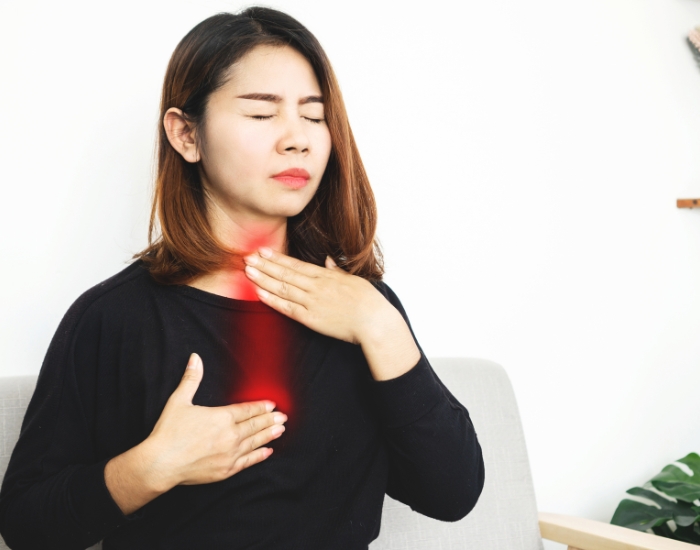Experiencing shortness of breath and chest discomfort can be alarming, especially when it feels like something more serious is happening. While these symptoms can sometimes be linked to physical conditions, they are often tied to anxiety. Understanding this connection is crucial for managing your health and finding relief.
The Connection Between Anxiety and Physical Symptoms
Anxiety isn’t just a mental health condition—it often manifests physically, leading to symptoms that can mimic more serious conditions like heart problems. Shortness of breath, a sensation of tightness in the chest, or discomfort are common responses to anxiety triggers.
When anxiety strikes, your body activates the fight-or-flight response. This causes an increase in heart rate, rapid breathing (hyperventilation), and muscle tension, which can result in sensations like chest discomfort or difficulty catching your breath. Although these symptoms are not dangerous in themselves, they can feel overwhelming and perpetuate the cycle of anxiety.
Recognizing Anxiety-Related Shortness of Breath and Chest Discomfort
It’s not always easy to distinguish anxiety-related symptoms from those of a physical health condition. However, anxiety-induced symptoms often have unique characteristics, such as:
- Occurring during stressful situations or thoughts.
- Resolving or improving with relaxation techniques.
- Accompanied by other anxiety signs, such as racing thoughts, sweating, or dizziness.
If your symptoms persist, worsen, or occur without a clear cause, it’s essential to seek medical evaluation to rule out other potential conditions.
What Can Trigger These Symptoms?
Several factors can contribute to shortness of breath and chest discomfort related to anxiety, including:
Stressful Events or Situations
Work pressures, financial worries, or personal conflicts can lead to heightened anxiety and trigger physical symptoms.
Panic Attacks
Panic attacks can cause intense physical sensations, including hyperventilation and chest pain. These episodes often appear suddenly and may feel similar to a heart attack.
Chronic Anxiety Disorders
Conditions such as generalized anxiety disorder (GAD) or social anxiety can cause ongoing physical symptoms, particularly during periods of high stress.
Lifestyle Factors
Poor sleep, caffeine consumption, or lack of exercise can amplify anxiety and its physical effects.
Practical Ways to Manage These Symptoms
If anxiety is causing shortness of breath and chest discomfort, there are effective ways to regain control and reduce the intensity of these symptoms:
- Practice Deep Breathing
Intentional breathing techniques, such as diaphragmatic breathing, can help slow your heart rate and calm your body. - Ground Yourself in the Present
Techniques like the 5-4-3-2-1 method (identifying five things you can see, four you can touch, etc.) can redirect your focus and alleviate anxiety. - Stay Active
Regular physical activity can reduce stress hormones and improve your overall mental and physical health. - Limit Caffeine and Alcohol
Both substances can exacerbate anxiety symptoms, so reducing intake may help. - Seek Support
Talking to a trusted friend, family member, or therapist can provide relief and help you develop coping strategies.
When to Seek Professional Help
While self-care strategies can be effective, there are times when professional intervention is necessary. Consult a healthcare provider if:
- Your symptoms are frequent, severe, or interfere with daily life.
- You experience chest pain that is sharp, lasts several minutes, or radiates to other areas.
- You’re unsure whether your symptoms are caused by anxiety or a physical condition.
How Pearland Health Care Can Help
At Pearland Health Care, we understand the impact that anxiety-related symptoms like shortness of breath and chest discomfort can have on your life. Our expert physicians are equipped to assess your condition, rule out underlying physical causes, and create a personalized treatment plan that addresses both your mental and physical well-being.
Don’t let anxiety control your life—contact Pearland Health Care today for compassionate, comprehensive care.
Final Thoughts
Shortness of breath and chest discomfort from anxiety are common, but they don’t have to disrupt your daily life. By understanding the connection between anxiety and physical symptoms and taking proactive steps, you can regain a sense of control and calm. If these symptoms persist or cause significant distress, reaching out for professional care is an important step toward finding relief.
Disclaimer:
The information provided in this blog is for educational purposes only and is not intended as medical advice. It should not be used to diagnose or treat any health condition. Always consult with a qualified healthcare professional for accurate diagnosis and treatment of any symptoms or medical concerns.






